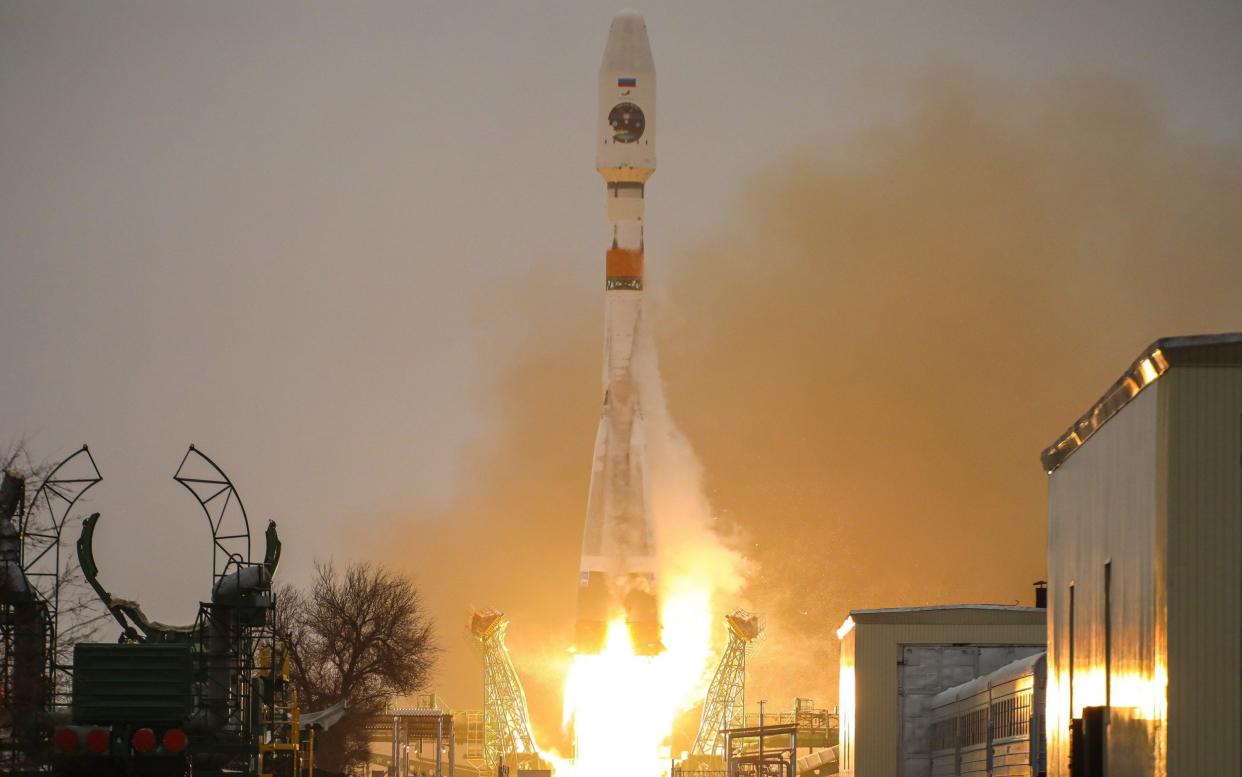Russia and United States upgrade Arctic satellites amid dash for the high north

The United States and Russia are upgrading space-based monitoring systems over the Arctic as strategic competition in the High North enters its most serious phase since the end of the Cold War.
Russia's Arktika-M satellite entered orbit on a Soyuz rocket launched from Baikonur Cosmodrome in Kazakhstan on Sunday.
It is the first of two new satellites intended to give Russia an overview of weather conditions in the region and retransmit distress signals from ships, aircraft or people in remote areas as part of a rescue programme. The second satellite will be launched in 2023.
The launch came after the United States and Canada announced they would beef-up their Cold-war era early warning system in response to increasing Russian and Chinese activity in the region
US President Joe Biden and Justin Trudeau, the Canadian Prime minister, said they would increase spending on the Northern American Aerospace Defence Command after bilateral talks on February 23.
Norad, a network of satellites, Radar stations and airbases in Alaska and Northern Canada, was first developed in the 1950s to give allies early warning of a Soviet attack over the North Pole, but has been superseded in recent years by hypersonic missiles developed by Russia and China.
The Arctic has warmed more than twice as fast as the global average during the past three decades, sparking a rush for resources and control of sea routes as the ice melts.
Russia is seeking to exploit newly accessible mineral resources and develop activity along the Northern Sea Route across its northern flank. It has also reopened several military bases in the region and invested in specialist Arctic warfare units over the past decade.
The United States, several Nordic countries and China have also shown interest in protecting their influence in the region.
China last year announced its own plans to launch a Synthetic Aperture Radar (SAR)-based satellite to monitor sea ice conditions and shipping routes.
Russia will take over the two-year rotating chairmanship of the Arctic Council, which also includes Canada, Denmark, Finland, Iceland, Norway, Sweden, and the United States, this year.
Anton Kobyakov, president Vladimir Putin’s advisor on Arctic affairs, has said priorities of the presidency will include the status of indigenous peoples, preserving ecosystems and biodiversity, developing tourism, and attracting investment.

